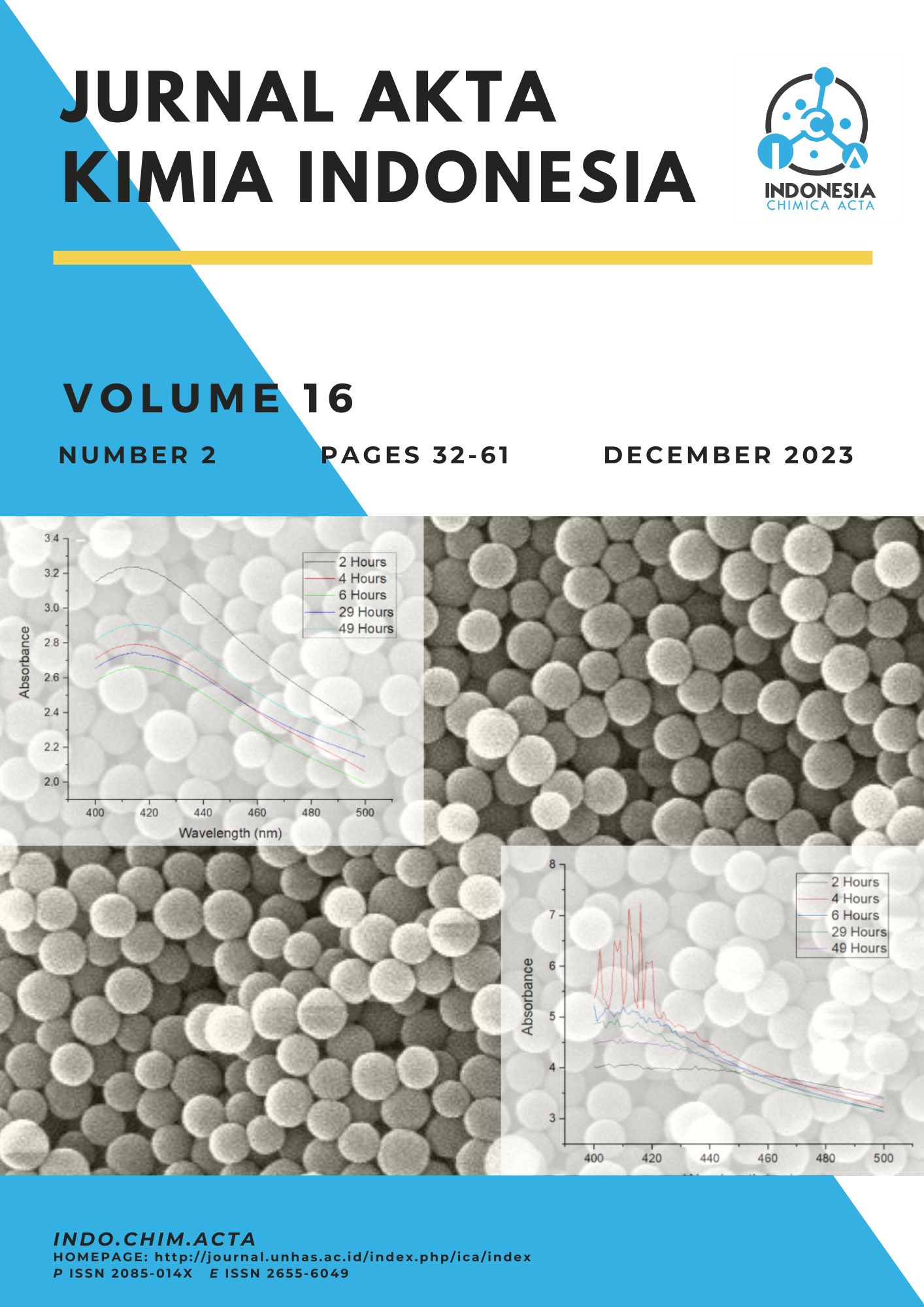Main Article Content
Abstract
Farmers use organic and inorganic fertilizers and pesticides in order to maintain the quality of their crops. Excessive use of fertilizers and pesticides in long term can cause soil contamination. This research is about determining the level of bioavailability of Cd and Pb metals in gonda plants (Sphenoclea zeylanica Gaertn) and the amount dissolved in the soil. The stepwise extraction method is used to determine dissolved metal species and quantitationally determined using an Atomic Absorption Spectrophotometer (AAS). The content of Cd and Pb metals in the gonda plants obtained was 4.3328 and 1.4788 mg⁄kg. The bioavailable Cd and Pb in soil are 13.76% - 21.51% and 10.19 - 11.54%, respectively, the potentially bioavailable ones are 53.91 - 57.84% and 79.97 - 80.00. % and non-bioavailable metals, namely 24.58 - 28.39 and 8.46 - 9.84%. Based on SNI 7387:2009 regulations regarding the Maximum Limit for Heavy Metal Contamination in Food, the Cd and Pb metal contamination in gonda plants on the agricultural land in the observed area has exceeded the threshold of 0.2 mg⁄kg on Cd and 0.5 mg⁄kg on Pb.
Article Details

This work is licensed under a Creative Commons Attribution-ShareAlike 4.0 International License.
How to Cite
Lisdiantari, N. L. G., Suprihatin, I. E. ., & Sahara, E. (2023). Bioavailability of Heavy Metals Cadmium (Cd) and Lead (Pb) In Agricultural Soils In The Tabanan Region and Their Accumulation In Gonda Plants (Sphenoclea zeylanica Gaertn). Jurnal Akta Kimia Indonesia (Indonesia Chimica Acta), 16(2), 49-53. https://doi.org/10.20956/ica.v16i2.30021
